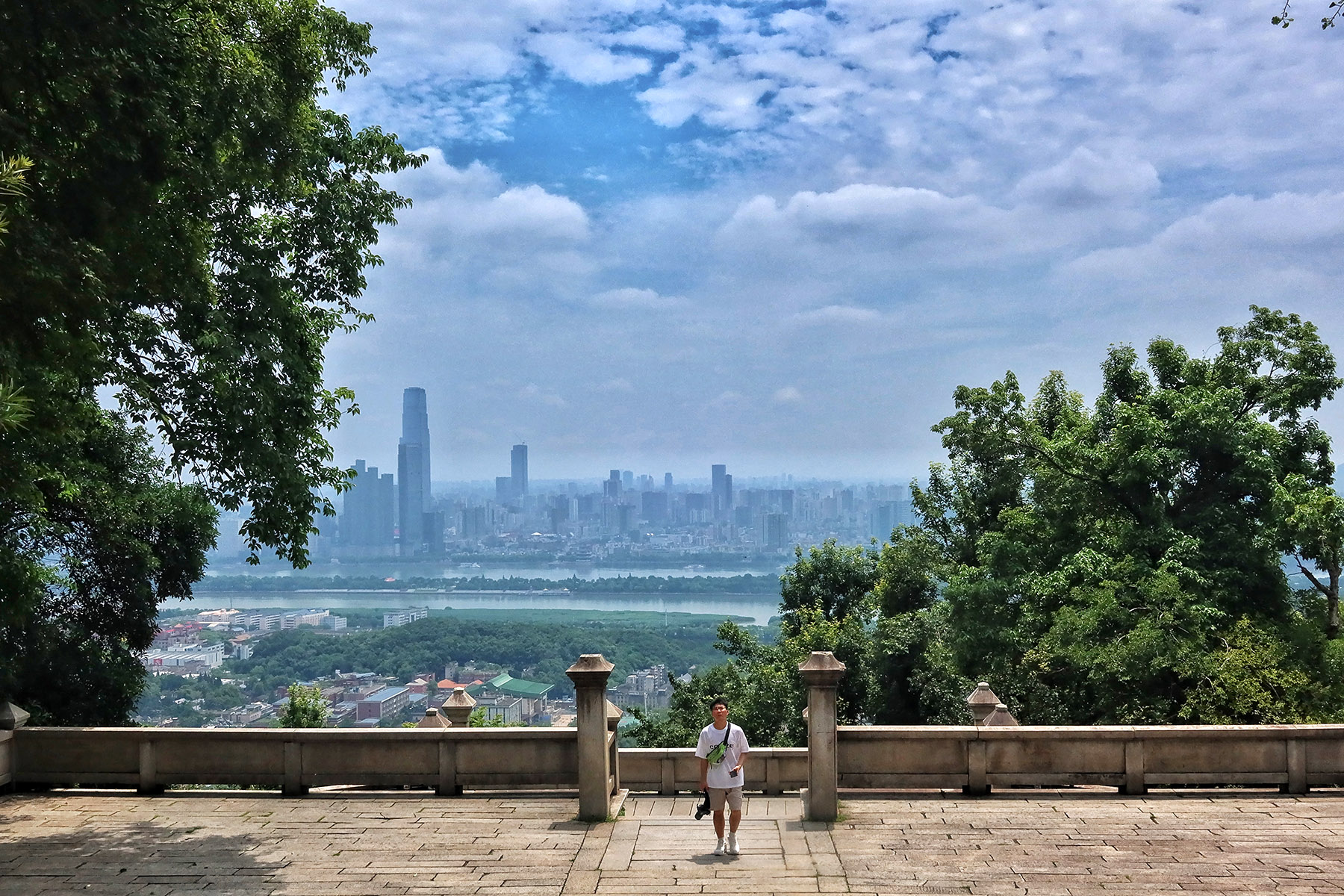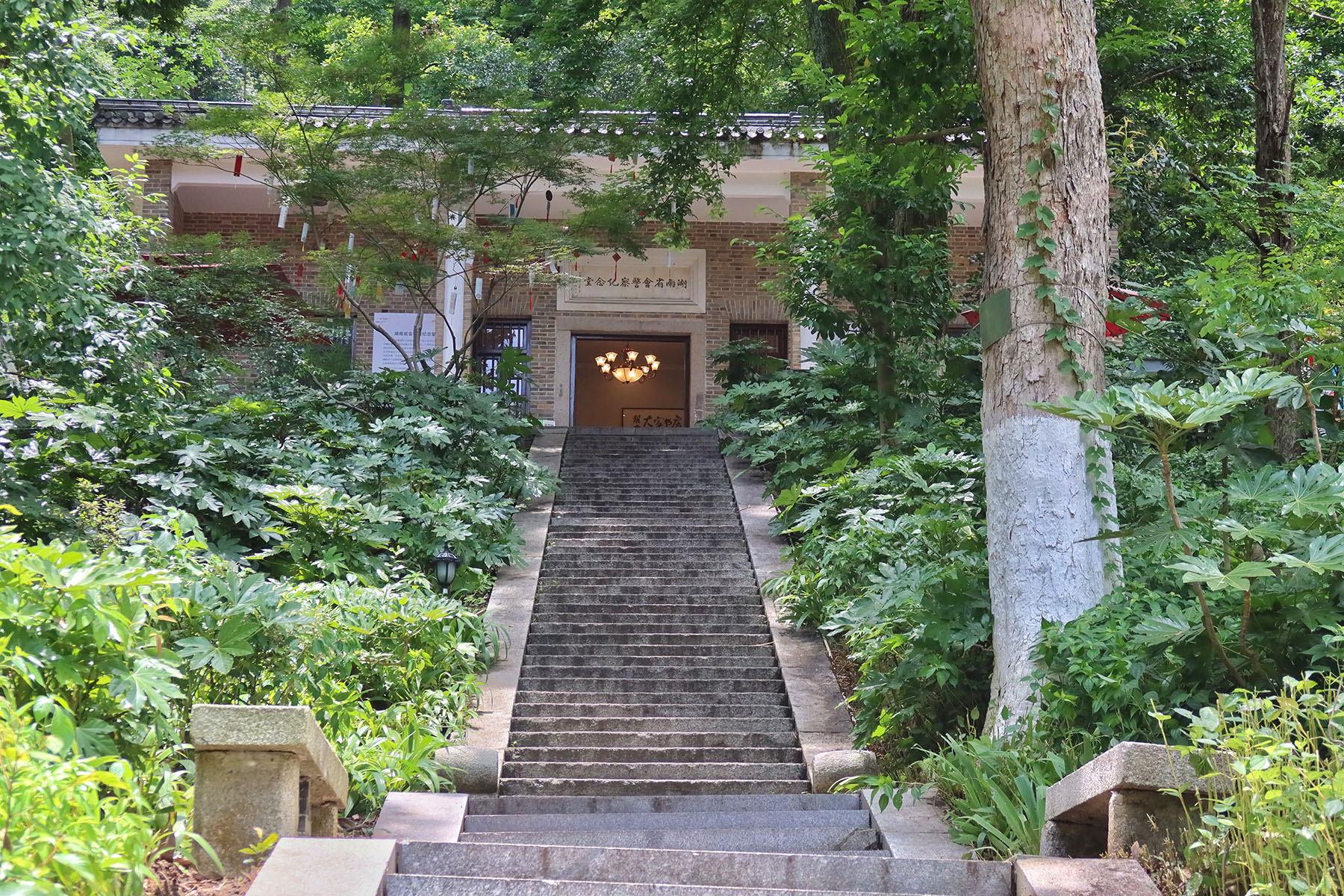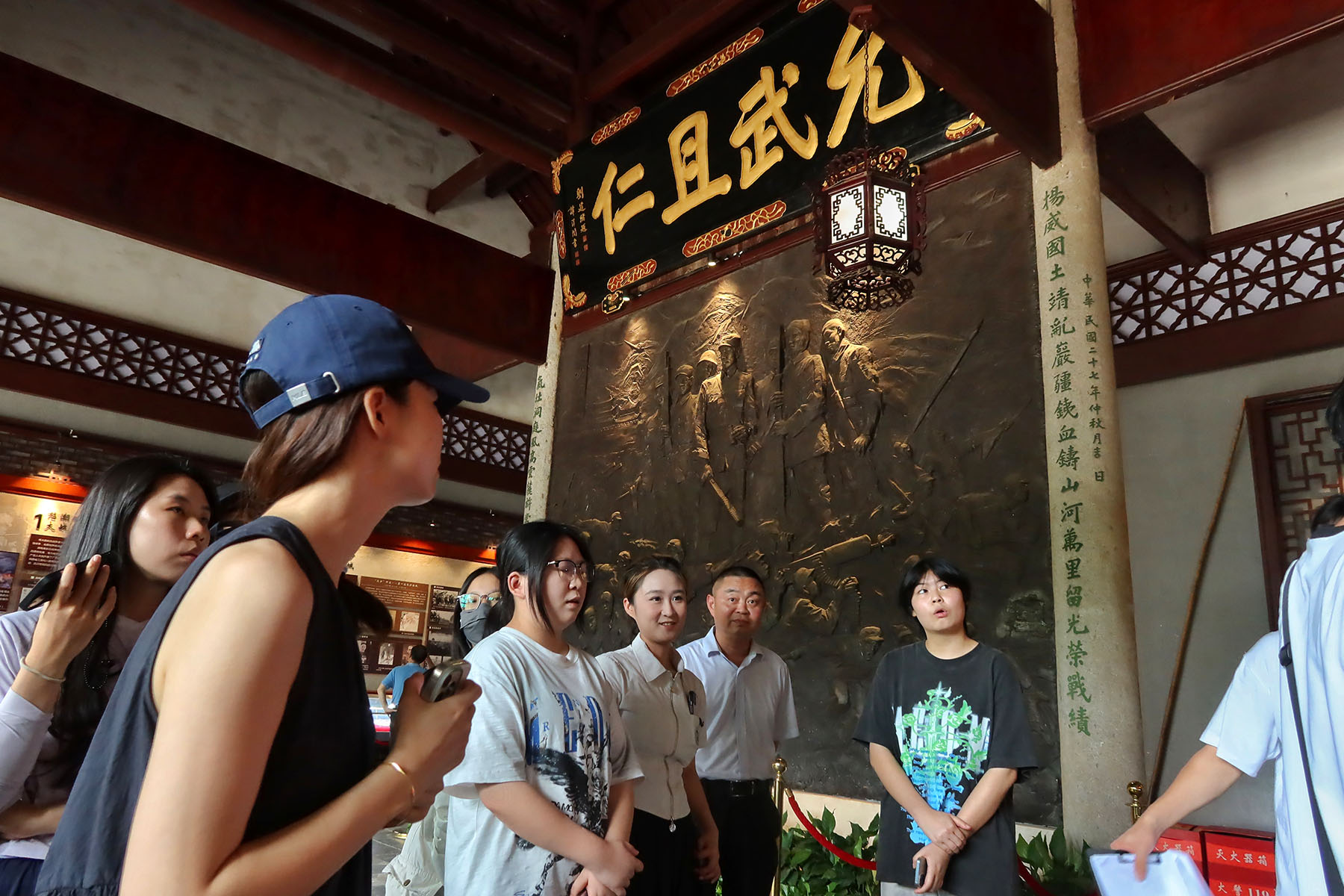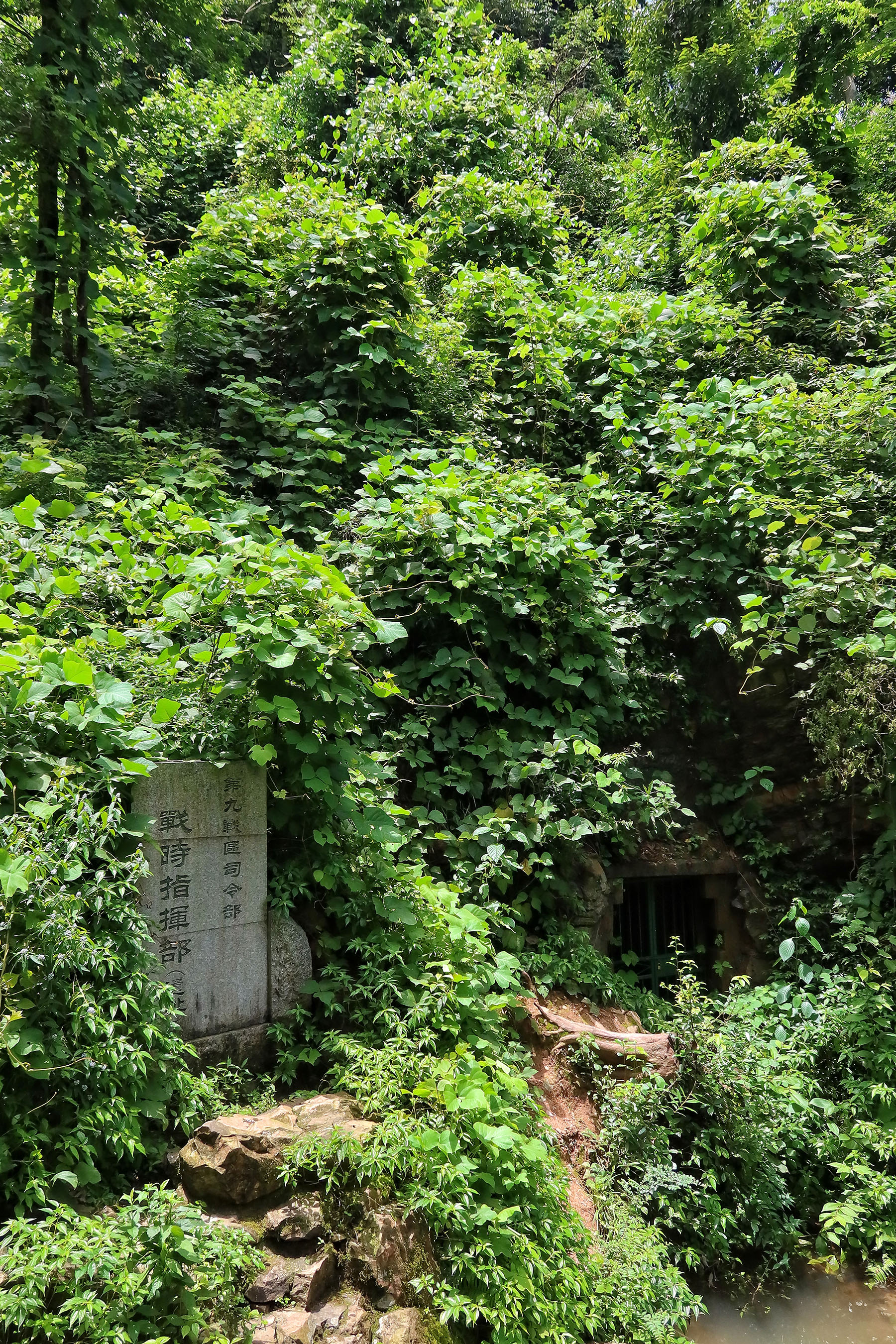Conservation efforts at Changsha battle sites offer chance for public to learn the stories of nation’s spirit, resolve

As the first light of dawn crept over the horizon, a crew clutching notebooks, already suited up, walked with measured steps through the woods.
They paused occasionally to study weathered tombstones and record their conditions, gently wiping any dust from them.
This is the heritage conservation team of Yuelu Mountain’s Lushan Scenic Area in Changsha, capital of Central China’s Hunan province.
The area is home to major wartime relics from the Chinese People’s War of Resistance Against Japanese Aggression (1931-45), including the former command post of a major war zone, an artillery fortification, and stone railings inscribed with the names of fallen soldiers.
“We look at roof tiles and wood structures for signs of decay, cracked walls, or shifting foundations,” said Liao Hua, a staff member in the cultural relic protection department of the scenic area’s administration.
Liao, who has worked to preserve the revolutionary cultural relics for two years, said inspections cover routine daily patrols, safety concerns amid rising visitor numbers, and special targeted remedies after problems are reported.
From September 1939 to May 1944, Chinese forces and the invading Japanese army engaged in four large-scale battles around Changsha, within China’s Ninth Theater, a key military administrative region established as part of the Chinese army’s resistance strategy. This five-year campaign is collectively known as the Battles of Changsha.

The first three battles, launched by Japanese invaders amid the expanding scope of World War II, were aimed at crippling the main forces of China’s Ninth Theater headquarters and undermining the Chinese government’s resistance.
Under the command of the Ninth Theater headquarters, Chinese troops mounted a fierce defense. From the Xinqiang River near Yueyang, 110 kilometers from Changsha, to the heart of the provincial capital, they fought bitterly, inflicting significant losses on Japanese forces and forcing them to retreat to their original positions.
The third battle in 1941-42 was a resounding success for Chinese forces. With well-coordinated deployments, precise execution, and relentless counterattacks, they delivered a major defeat to the enemy.
This victory not only galvanized national morale but also drew international attention, bolstering China’s global standing and reinforcing the belief in eventual victory over Japan. It was the Allies’ first major defeat of Japanese invaders after the Pearl Harbor incident.
During the fourth battle in 1944, however, the Japanese massed over 300,000 troops in a renewed offensive. Due to complacency at the strategic level and poor coordination among Chinese units, the city ultimately fell. Nonetheless, Chinese soldiers demonstrated unwavering resolve and a spirit of sacrifice, fighting tenaciously and inflicting heavy casualties on the invading forces.

The main wartime relics have been preserved in the scenic area and are significant remnants from the four major battles of Changsha during the Chinese People’s War of Resistance Against Japanese Aggression, said Wang Xiao, a senior official with the Cultural Relic Protection Department.
“They stand as enduring witnesses to the Battles of Changsha and hold substantial historical, cultural, and social value for the study of the war and military infrastructure in the following years,” Wang added.
Down the forested slopes across the mountainous area, the tombs of revolutionary martyrs and modern-era luminaries lie scattered. To safeguard these invaluable revolutionary artifacts, the Cultural Relic Protection Division was founded in 2004.
“These historical sites are designated as cultural relic protection units and are managed by relevant preservation regulations,” Wang said.
As the region’s humid, rainy climate poses natural challenges to preservation, the scenic area conducts regular vegetation clearance around the relics as needed.
It also contracts professional conservation teams to carry out scientific surface cleaning and maintenance, ensuring that the relics remain both presentable and identifiable.
“Overall, the relics are well preserved,” Wang said.

In 2015, the country celebrated the 70th anniversary of the war’s victory, and the city government undertook a comprehensive restoration of wartime memorial structures in the area, building a war memorial in a cultural park.
Among the restored monuments is the memorial stele for the fallen soldiers of the 77th Division of the 73rd Army of the National Revolutionary Army.
The 77th Division played a key role in defending the area around Changsha, which suffered heavy casualties while inflicting significant losses on the Japanese forces.
During the restoration process, a name plaque listing the fallen soldiers of the 77th Division was unearthed. “The plaque bears the inscribed names of the heroes who valiantly died in battle. The full recovery of this roster has brought to light the once-obscured stories of bravery and sacrifice, allowing their legacy to transcend history,” Wang said.
During a routine cultural relic cleanup in 2015, a modest, damaged cemetery covering about 20 square meters was identified as the burial ground of fallen soldiers from the Fourth Army of the National Revolutionary Army, who also made a big contribution to the Battles of Changsha, especially during the fourth battle, after which only one-third remained alive, according to historical records.

The dead soldiers were buried at Yuelu Mountain in 1945, and authorities carried out restoration work on the tombs of those soldiers in October 2021.
“A pedestrian path leading to the tombs was constructed to improve access,” Wang said.
Today, people can visit these fallen heroes. A stone plaque engraved with the words “Eternal Glory” stands in front.
The gravestone consists of three stone slabs offering the date and other information about its construction. The site has been designated as a municipal-level protected cultural heritage site in Changsha.
Other cultural relic preservation efforts included maintenance work in 2024 on the former site of the Ninth Theater’s artillery command headquarters, a key wartime location during the Battles of Changsha.
Wang sees these relics as living monuments to history, offering direct, physical proof of past events.
“Such sites not only help the public understand history but also serve as powerful reminders, urging future generations to remember the lessons of the past and prevent the recurrence of historical tragedies,” he said.

In recent years, thanks to strong national advocacy, public awareness regarding cultural relics, especially those related to the war, has significantly grown.
On memorial days such as Tomb Sweeping Day, or Qingming Festival, many visitors come to the cemetery to pay tribute to the 73rd Army, Wang said.
Schools also frequently organize groups to honor fallen heroes, allowing young students to connect with history in a meaningful way, he added.
Cultural relics inspector Liao Hua has also noticed positive changes over the past few years.
“Public awareness has improved. Visitors today generally show great respect for monuments related to the War of Resistance Against Japanese Aggression,” Liao said.
The scenic area has designed a culture tour route, which includes key historical sites and serves as a reference for touring study groups and educational visitors.
“Revolutionary-themed tourism is experiencing a generational shift, with younger visitors becoming the main audience, particularly students participating in study-tour activities,” Wang said.
“This trend has encouraged the development of immersive, interactive experiences at wartime sites, drawing greater attention from younger generations and significantly enhancing the relevance and sustainability of our site preservation and utilization,” he said.
Contact the writer at yangfeiyue@chinadaily.com.cn


